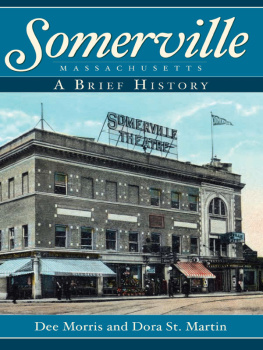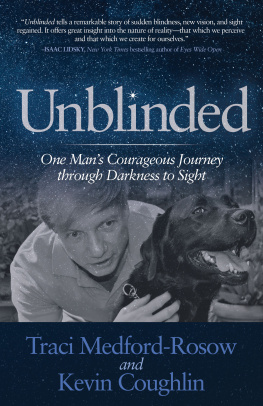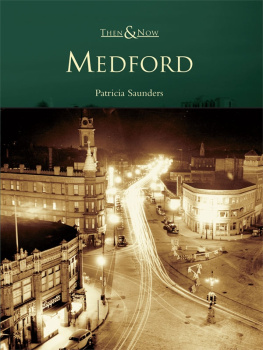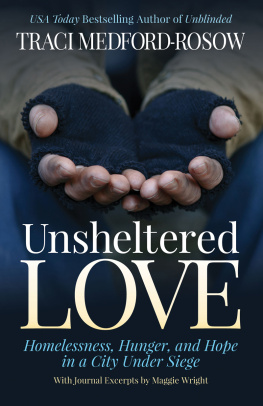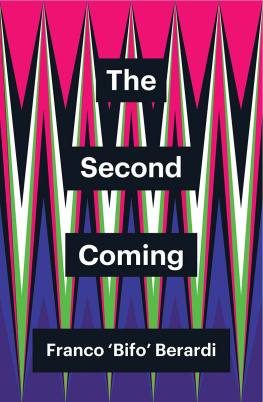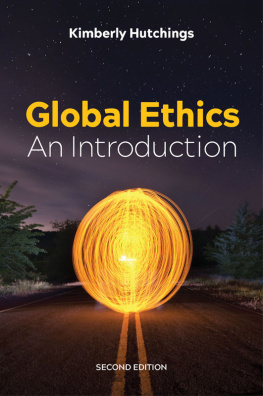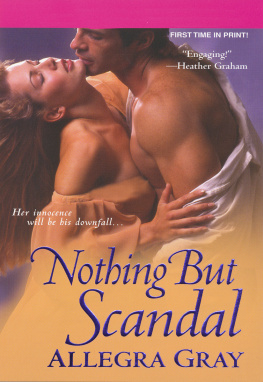

An 1880 birds-eye view map focuses on the major roads radiating out from the center and the clusters of buildings that formed Medfords neighborhoods. All the major streets converge downtown at Medford Square. West Medford is in the top left. Medford Hillside is central left, just south of the river. South Medford is bottom left, beginning at the intersections of Mystic Avenue and Main Street. East Medfords Glenwood section is to the right of Medford Square and north of the Mystic River. Wellington is the extreme east border of Medford. North Medford is north of Medford Square at the end of Forest Street. Courtesy of the Medford Historical Society.
Published by The History Press
Charleston, SC 29403
www.historypress.net
Copyright 2009 by Dee Morris
All rights reserved
Front cover painting: Medford Hillside, by George Loring Brown. Courtesy of the Medford Historical Society.
First published 2009
e-book edition 2013
Manufactured in the United States
ISBN 978.1.62584.317.3
Library of Congress Cataloging-in-Publication Data
Morris, Dee.
Medford : a brief history / Dee Morris.
p. cm.
Includes bibliographical references and index.
print edition ISBN 978-1-59629-767-8
1. Medford (Mass.)--History 2. Medford (Mass.)--Biography. I. Title.
F74.M5M67 2009
974.44--dc22
2009040559
Notice: The information in this book is true and complete to the best of our knowledge. It is offered without guarantee on the part of the author or The History Press. The author and The History Press disclaim all liability in connection with the use of this book.
All rights reserved. No part of this book may be reproduced or transmitted in any form whatsoever without prior written permission from the publisher except in the case of brief quotations embodied in critical articles and reviews.
CONTENTS
ACKNOWLEDGEMENTS
First, enormous thanks are due to Sue Gerould, who examined many images and prepared the winners electronically. Her insights, recommendations and sense of humor were invaluable.
Many thanks go to those who helped in their professional capacity, especially Barbara Kerr, the staff of the Medford Public Library and George Manzelli Jr. of the South Middlesex Registry of Deeds. Maura McEnaney, Ken Krause, Michael Bradford, Kyna Hamill and Gerry Hershkowitz, among others of the Medford Historical Society, discussed the big picture. Tom Lincoln of M-Belt and Rosemarie Woods of the Royall House shared their expertise. Ryan Hayward of the Medford Historical Commission provided perspective. Will Tenney took beautiful photographs. Mayor Michael McGlynn offered ideas on topics, and May Marquebreuck shed light on the immigrant experience. Donna Halper graciously shared her knowledge of the wireless scene at Tufts.
Thank you to members of the Medford community: Bruce Nays, Jim and Betty Owens, Claire Diminico, Doug Packer, Linda Piantedosi, Ruth Roper, Mary Sbuttoni and Allison Andrews. A special debt of gratitude is owed Laura Collins, who worked wonders organizing the text.
A big thank-you goes to all the Medford residents who shared their views about the neighborhoods during my lectures and walking tours.
Finally, there is a debt of gratitude owed to John Lonergan, who was always there to encourage. His sudden passing in April 2009 has left a huge void.
INTRODUCTION
Poor people do not seem so poor here, nor the rich so rich as elsewhere.
a vacationer in Medford, Massachusetts Ploughman, 1848
Medford is more than a city of about eight square miles located north of Boston. It is several neighborhoods of variable terrain connected by the Mystic River. In fact, Medford is a great deal like the river flowing through its heart. It moves forward to embrace the future while it steps back to safeguard the past. The ebb and flow of the Mystic in former days provided sustenance for the Native Americans and was one of the main reasons why industrious and creative settlers moved here.
I began to understand this fluid yet consistent city when, several years ago, Barbara Kerr of the Medford Public Library asked me to put together a walking tour of Medford Square. That was a success, so it seemed obvious to explore other sections or even subsections of a few streets. The neighborhoods were different yet the focal points remained the same: Who lived there? What happened in that place? How has it changed? The answers have been informative and positively enlightening. In Victorian times, from the 1830s through the 1890s, Medford was composed of several villages. They were Medford Square, West Medford and Medford Hillside. Toward the east lay Glenwood, centered at Park Street, and Wellington, a farming district next to Malden. South Medford was never given a local name. Abutting Somervilles Winter Hill, it was the location of two famous racetracks. After they closed, an energetic community of Italian families settled in the Harvard Street area. Except to those of us who live there, north Medford or Fulton Heights remains a mystery because of convoluted street patterns. The Mystic River was so important that it had to have its own chapter.
People of different social and economic levels created a community. The famous and the rich were often well documented, yet they needed to become three dimensional. Those in the vast ocean of the middle class were often portrayed as historys cast of extras, essential but not memorable. To level the playing field and get a sense of the fabric of a neighborhood, I examined the Medford Mercury, the Boston Globe and the writings of local authors in the Medford Historical Register. The Registry of Deeds in Cambridge provided fresh information as to how people used the land, especially in the nineteenth century. I singled out a few people, extraordinary in different ways, who could be viewed as unique entrepreneurs or original thinkers.
Medfords formal history began when a vast number of acres were granted to Mr. Cradock to be his own peculiar plantation in the 1630s. By adding tracts from Charlestown and Malden and then giving away some land to Winchester and Everett, this place became an official city in 1892. Like the Mystic River, it has experienced development, multiple use, preservation and reconfiguration. A wide range of people have called Medford their home. Here are some of their stories.
CHAPTER 1
LOCATING PLACE
A Peculiar Plantation
It is paradiseFor here are many isles planted with corn, groves, mulberries, savage gardens, and good harbors. The seacoast, as you pass, shows you all along large cornfields.
Captain John Smith, 1614
The river was called the Missi-tuk or great tidal river because the current flowed at first in one direction and then in the opposite. It found its source in the Mystic Lake, a freshwater body divided into roughly equal parts by the Partings, a shoal where the land rose slightly. From there, the winding river curved and turned until it met the ocean. The tides were gentle, varying the depth within its channel. It was a watery highway free from sunken rocks or sandbars. Although the banks were often steep, some natural landing places permitted access to the stream. An occasional ford made crossing from one side to the other possible by foot. Native Americans drew bass and blue fin from the river and placed seines in the brooks that teemed with alewives so numerous that they created a silvery carpet in season. When water drained from the riverside every twelve hours, the exposed areas released an invigorating and salty breath. The Mystic River was a sacred gift protected by the people.
Next page

